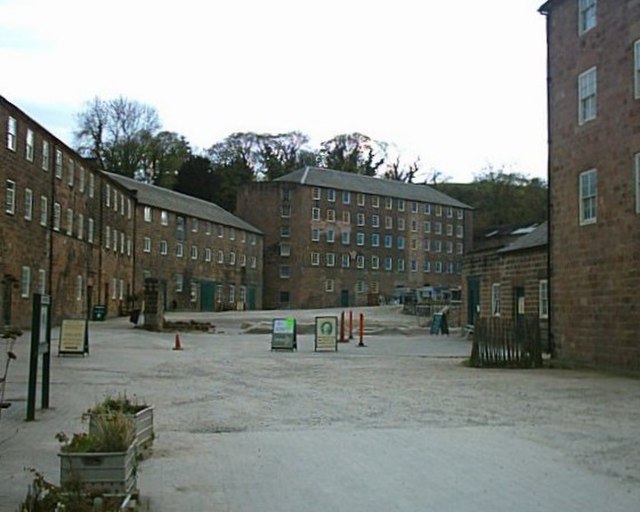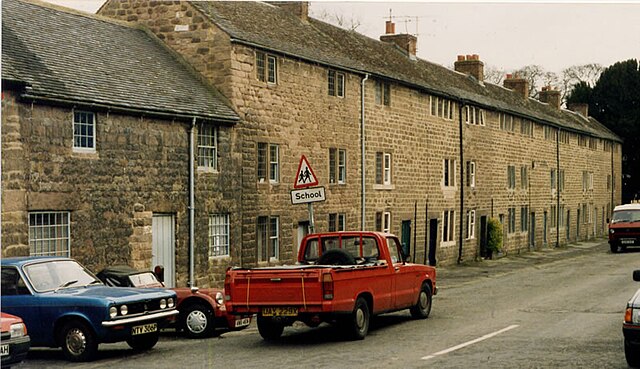High Peak Junction, near Cromford, Derbyshire, England, is the name now used to describe the site where the former Cromford and High Peak Railway (C&HPR), whose workshops were located here, meets the Cromford Canal. It lies within Derwent Valley Mills World Heritage Site, designated in 2001, and today marks the southern end of the High Peak Trail, a 17 miles (27 km) trail for walkers, cyclists and horse riders. The Derwent Valley Heritage Way also passes this point, and popular walks lead from here along the towpath in both directions.
The advertisement placed for the construction of the branch line from the Midland Railway Junction to the canal-side site.
A view inside the old workshop, showing the forge.
A 1966 view from the A6 bridge down the lower part of Sheep Pasture incline towards the wharf.
Gradient Post at the foot of Sheep Pasture Incline, Cromford and High Peak Railway, Derbyshire, England
Cromford is a village and civil parish in Derbyshire, England, in the valley of the River Derwent between Wirksworth and Matlock. It is 17 miles (27 km) north of Derby, 2 miles (3.2 km) south of Matlock and 1 mile (1.6 km) south of Matlock Bath. It is first mentioned in the 11th-century Domesday Book as Crumforde, a berewick of Wirksworth, and this remained the case throughout the Middle Ages. The population at the 2011 Census was 1,433. It is principally known for its historical connection with Richard Arkwright and the nearby Cromford Mill, which he built outside the village in 1771. Cromford is in the Derwent Valley Mills World Heritage Site.
Cromford Mill
Workers cottages in Cromford, some having "weavers' windows" visible on the top floors
The Greyhound Hotel built for Richard Arkwright in 1778 for the use of businessmen and others visiting the mills.
Cromford Pond built in 1785 as the pound for Cromford Mill.








